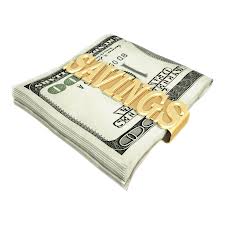 Here’s what happened. Mister seller ten sold to thirty six at a price of twenty. Mister seller nine sold to buyer twenty. So, nine, there is no nine. Nine sold to twenty at a price of what? Six. That’s okay. So, seller six sold to twenty at a price of twenty. We won’t ask who buyer twenty is. Buyer twenty is going to screw everything up.
Here’s what happened. Mister seller ten sold to thirty six at a price of twenty. Mister seller nine sold to buyer twenty. So, nine, there is no nine. Nine sold to twenty at a price of what? Six. That’s okay. So, seller six sold to twenty at a price of twenty. We won’t ask who buyer twenty is. Buyer twenty is going to screw everything up.
So, buyer fourteen through- I can’t read this either. Buyer fourteen sold to buyer forty four for twenty, and buyer twenty sold to buyer forty for twenty two, and seller twenty four sold to buyer thirty for twenty five.
So, five people traded now which five were they? The sellers were ten, six fourteen and twenty four, the bottom five. The five buyers were thirty six, twenty, forty four, forty and thirty. So, basically forty four, forty, thirty six, thirty six didn’t buy, twenty bought instead.
So, if you look at it, so it’s not quite the way theory would have predicted, but almost. If you look at it, if you just shuffle the order and you put the sellers, instead of from top to bottom, you put them from bottom to top, you get what looks like a demand curve and a supply curve. And so, what happened? All these five people ended up selling, one, two, three, four, five, those are exactly the sellers. The price they sold for was all between twenty and twenty five and the five buyers were forty four, forty, thirty six, thirty. Twenty six didn’t manage to buy, but twenty bought. So, what is the theory of the free market? The theory of the free market says, “This chaotic situation where they had less than two minutes to decide what to do could be analyzed as if you put a demand curve together with a supply curve and there was one price that they miraculously knew.
Here it should have been twenty five. It turned out to be twenty or twenty two that all the trade took place at. At that one price you get all the trades happening. The people have the highest valuation buyers they’re the one who get the tickets. The people with the lowest valuation sellers sell it. So, the people who end up with the tickets are these red guys at the top and the blue guys at the top. All the tickets go from the people who value the stuff least to the people who value it more. So, the market has done an extraordinary thing in two minutes.
So, there was one mistake. Mister or miss twenty, whose identity we are protecting, although I’m searching the faces, mister or miss twenty got a very bad deal. She or he, let’s say he, bought at twenty when the value was twenty. That was a horrible deal. He didn’t get any extra out it. So, he should probably have only bought if the prices were lower, and then twenty six would have bought instead of twenty. So, twenty sort of squeezed his way into the market, so twenty six and twenty between them somehow there was a slight inefficiency.
But, basically with no training, no background, no practice, these sixteen undergraduates managed to reproduce – they gathered all the information in the whole economy, and they discovered who were the eight people who valued the tickets the most and they ended up with all the tickets. For me to do it and sort it out would have taken longer. The market solves a complicated problem and gets information incredibly quickly, and put things into the hands of the people who value it the most. And the marginal buyer thought it was worth about twenty five or twenty and that’s what the price turned out to be.
So anyway, we’re going to come back to this parable at the beginning of the next class.
Finance: An Experiment Of The Financial Market Pt 3
